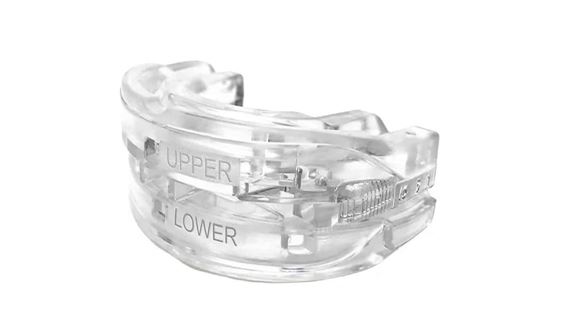Comparing 3-Axis vs. 5-Axis Machining: Which One is Right for You?
In the world of CNC machining, choosing between 3-axis and 5-axis machining is crucial for manufacturers aiming for precision, efficiency, and cost-effectiveness. Each machining technique offers unique advantages and is suited for specific applications. Whether you are working with 5-axis CNC parts or standard 3-axis components, understanding their differences will help you make an informed decision. This guide will compare 3-axis vs. 5-axis machining to determine which is right for your manufacturing needs.
Understanding 3-Axis Machining
What is 3-Axis Machining?
3-axis machining is one of the most common and fundamental CNC machining techniques. The cutting tool moves along the X, Y, and Z axes, allowing for straightforward operations like drilling, milling, and cutting. This type of machining is widely used in various industries, from automotive to general manufacturing.
Advantages of 3-Axis Machining
- Ease of Use: Simple setup and programming make it ideal for standard operations.
- Cost-Effective: Lower costs compared to 5-axis machining due to reduced machine complexity.
- Suitable for Basic Designs: Ideal for producing flat or moderately complex parts.
Limitations of 3-Axis Machining
- Limited Geometrical Complexity: Not suitable for intricate designs requiring multi-directional cutting.
- Longer Production Time: Requires multiple setups to achieve complex shapes.
- Less Precision for Complex Parts: Can struggle with achieving high tolerances in complex geometries.
Understanding 5-Axis Machining
What is 5-Axis Machining?
5-axis machining allows for movement along five different axes simultaneously. In addition to X, Y, and Z, it includes two rotational axes, making it capable of handling highly complex geometries with fewer setups. This advanced machining method is commonly used in aerospace, medical, and high-precision engineering industries.
Advantages of 5-Axis Machining
- Enhanced Precision: Ideal for creating complex and intricate 5-axis CNC parts with tight tolerances.
- Reduced Setup Time: Eliminates the need for multiple setups, improving efficiency.
- Better Surface Finishes: Allows for smoother cutting and fewer tool changes, resulting in superior surface quality.
- Increased Flexibility: Suitable for machining undercuts and difficult angles that 3-axis machining cannot handle.
Limitations of 5-Axis Machining
- Higher Costs: More expensive machines and programming requirements.
- Complex Programming: Requires skilled operators and advanced CAD/CAM software.
- Not Always Necessary: Overkill for simple, flat components.
3-Axis vs. 5-Axis Machining: Key Differences
| Feature | 3-Axis Machining | 5-Axis Machining |
| Complexity | Suitable for simple and moderately complex parts | Handles highly intricate geometries |
| Precision | Lower precision for complex parts | High precision and accuracy |
| Setup Time | Requires multiple setups | Reduced setups due to multi-axis movement |
| Cost | More affordable | Higher initial investment |
| Speed | Slower for complex designs | Faster due to fewer repositionings |
| Industry Application | General manufacturing, automotive | Aerospace, medical, high-precision engineering |
Which One is Right for You?
Choosing between 3-axis and 5-axis machining depends on your project requirements:
- Choose 3-Axis Machining If:
- You work with simple or moderately complex designs.
- Cost is a major concern, and you need an affordable option.
- You require a straightforward setup with minimal programming complexity.
- Choose 5-Axis Machining If:
- You need to produce highly intricate parts with tight tolerances.
- Speed and efficiency are priorities in reducing lead times.
- Your industry demands precision (e.g., aerospace, medical devices).
Why Choose Premium Parts Manufacturing Limited?
At Premium Parts Manufacturing Limited, we specialize in high-quality 5-axis CNC parts tailored to meet the most demanding industrial applications. Whether you need advanced 5-axis machining services or cost-effective 3-axis solutions, our expertise ensures precision, reliability, and efficiency in every project.
Conclusion
Both 3-axis and 5-axis machining have their advantages and ideal applications. If your project requires basic operations and affordability, 3-axis machining is a great choice. However, if you need high precision, faster production, and superior 5-axis CNC parts, investing in 5-axis machining is the way forward.
Partnering with experts like Premium Parts Manufacturing Limited ensures you receive the best machining solutions tailored to your specific needs. Whether you choose 3-axis or 5-axis, the right technology can significantly impact your production quality and efficiency.
Need help deciding? Request a free quote today to explore the best CNC machining option for your project!
FAQs
1. What is the main difference between 3-axis and 5-axis machining?
3-axis machining moves the cutting tool along three axes (X, Y, and Z), while 5-axis machining adds two rotational axes, allowing for more complex geometries and reduced setup time.
2. Is 5-axis machining always better than 3-axis machining?
Not necessarily. 5-axis machining is ideal for intricate designs, but for simple parts, 3-axis machining is more cost-effective and easier to manage.
3. Does 5-axis machining improve production speed?
Yes, 5-axis machining reduces the need for multiple setups, leading to faster production times and improved efficiency.
4. What industries benefit most from 5-axis machining?
Industries like aerospace, medical, and high-precision engineering benefit the most from 5-axis machining due to its ability to create complex and precise components.
5. Are 5-axis CNC parts more expensive than 3-axis parts?
Generally, yes. The complexity, precision, and efficiency of 5-axis machining come at a higher cost, but it provides better quality and reduced lead times.
6. How do I choose the right CNC machining service?
Consider factors like the complexity of your parts, budget, required precision, and turnaround time. If you need expert guidance, Premium Parts Manufacturing Limited can help you find the best solution.





